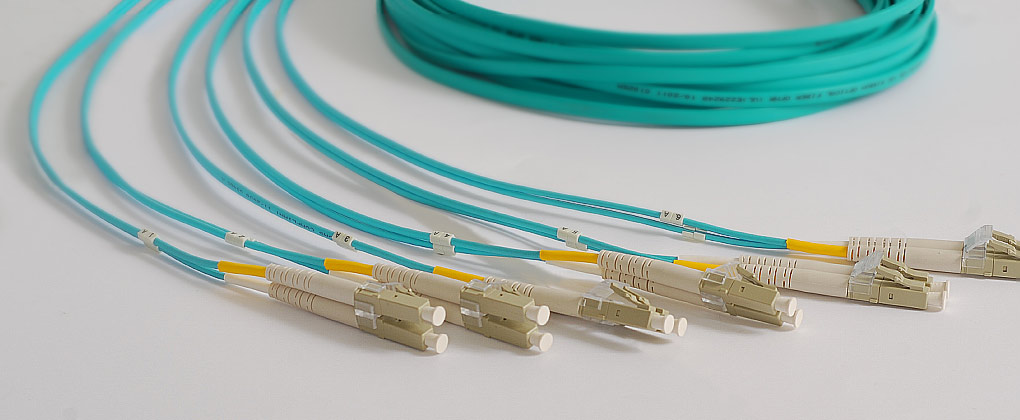Fiber: The Causes of Limitation on Optical Transmission Distance
Published by Cablesys on May 14th 2018

The many advantages of fiber optic networking, such as higher speeds, bandwidth, and density, have made it the preferred standard over copper networking. Fiber optic cable can also broadcast/transmit at much further distances than traditional copper cables, such as coax or twisted pair wire, can. But, overall, the precise distance that fiber optic can broadcast/transmit over is restricted by various elements. One of the main complications with using fiber is transmission distance. Transmission distance can span meters, to hundreds of meters, and even as far as kilometers. But, the longer the distance is, the weaker the optical link and signal become. Many practices and techniques are being implemented to improve the limitations on transmission distance. This article will discuss the components that reduce optical transmission distance the most.
Dispersion
Usually, dispersion is what limits maximum transmission distance. Two types of dispersion can affect optical transmission distance. Chromatic dispersion happens when the signal spreads, or becomes dispersed or thinned, because of an over influx of light rays moving at different speeds. Modal dispersion occurs when the signal becomes dispersed due to excessive propagation mode(s).
Modal dispersion widely impacts multimode transmission. The dispersion is caused by a delay between the fastest and slowest modes of the fiber connectivity because the modes cannot arrive at the same time. Therefore, the multimode fiber performance is restricted (illustrated below). On the other hand, chromatic dispersion affects the transmission distance of single-mode fiber. Single-mode fiber optics have a significantly smaller core than multimode fiber does. This attributes to why single-mode has better signal transmission that multimode fiber.

Fiber Optic Transceiver Light Source
Optical signals are sent through the pathway of fiber optic cables. But, a majority of the terminals are based electronically. Optical and electrical signals require necessary conversions. To complete the conversions, fiber optic transceivers are needed. The signal conversion process is largely dependent on an LED or laser diode inside the transceiver is the light source of the transceiver. Fiber optic link transmission distance can also be impacted by the source.
LED diode transceivers are only able to support short distance and low data rate transmission. As a result, they cannot meet the demand for and support higher data rates and longer transmission distances. Laser diodes are used for longer and higher transmission data rates in modern, newer transceivers. Some of the most common laser light sources in transceivers are FP (Fabry Perot) laser, DFP (Distributed Feedback) laser, and Vertical-Cavity Surface Emitting (VCSEL) laser. The table below explains the characteristics of these light types.
| LED | FP | VCSEL | DFB | |
|---|---|---|---|---|
| Transmission Distance | Short range | Medium Range | Medium Range | Long Range |
| Transmission Speed | Low Speed | High Speed | High Speed | Very High Speed |
| Transmission Frequency | Wide Spectral Width | Medium Spectral Width | Narrow Spectral Width | Narrow Spectral Width |
| Cost | Low Cost | Moderate Cost | Low Cost | High Cost |
Transmission Frequency
Each laser power source pairs with a different frequency to transmit its signal. The frequency fiber optic signals are transmitted directly affects the maximum distance supported by a fiber optic transmissions system. Typically, the optical system can support a wider distance when the frequency greater. Therefore, selecting the right frequency is vital to the effectiveness of your fiber optic system. Normally/Standardly, single-mode systems use 1300nm and 1550nm frequencies, while multimode fiber systems use 850nm and 1300nm frequencies.
Transmission Capacity (Bandwidth)
Transmission distance is directly affected by the bandwidth the fiber cable supports. Typically, when bandwidth increases, the transmission distance decreases proportionally. For example, a fiber that can support 500 MHz bandwidth at a distance of 1km can only support 250 MHz at 2km and 100 MHz at 5km, etc. Single-mode fiber has exceedingly higher network bandwidth than multimode fiber because of how light travels through them.
Connectors and Splices
Connectors or splices are inevitable in the majority fiber optic connectivity. When optical signals pass through connectors or splices, signal loss can occur. The signal loss amount depends on the quality, number, and types of connectors and splices. Although connectors can contribute to signal loss, splices are usually the main cause when optical signal is lost.
